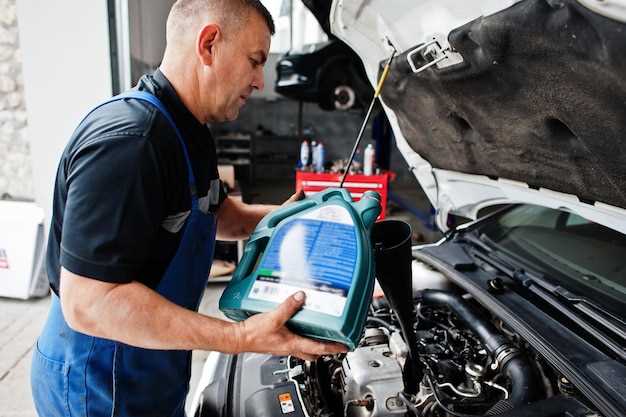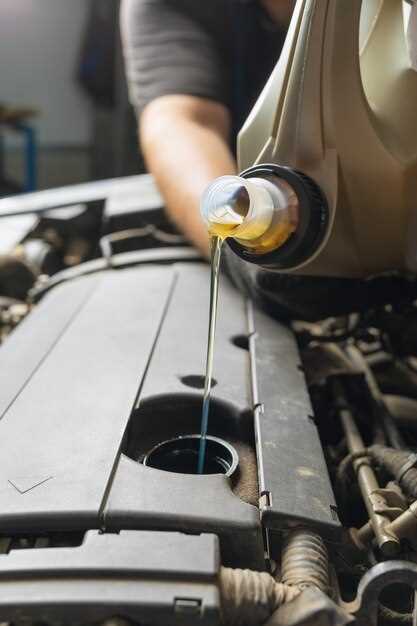

Owning a vintage car is a rewarding experience, offering a unique connection to automotive history. However, maintaining these classic vehicles requires a deep understanding of their specific needs, particularly when it comes to oil changes. Unlike modern cars that are equipped with advanced technologies, vintage cars rely on simpler mechanics which demand regular attention to keep them running smoothly.
One of the most crucial aspects of vintage car maintenance is the regular change of oil. Over time, engine oil can become contaminated with dirt, debris, and byproducts of combustion, leading to decreased engine performance. For vintage engines, which often lack the protective features found in contemporary designs, timely oil changes can prevent serious damage and prolong the lifespan of the vehicle.
Additionally, vintage cars often operate under different conditions than modern vehicles, placing unique stresses on the engine. Using the appropriate oil for these older models and ensuring it is replaced regularly can make a substantial difference in longevity and performance. By adhering to a rigorous oil change schedule, vintage car owners not only protect their investment but also preserve the legacy of automotive craftsmanship.
Understanding the Unique Oil Needs of Classic Engines

Vintage cars often feature engines with distinct characteristics that require specialized attention when it comes to oil maintenance. Unlike modern engines, which are designed to operate efficiently with advanced lubrication systems, classic engines may suffer from wear and tear that necessitates a different approach to oil selection and change intervals.
One of the primary concerns with vintage engines is the use of non-detergent oils in their earlier designs. These engines can develop sludge and varnish if exposed to detergents used in contemporary oils. Therefore, selecting oil specifically formulated for classic cars is crucial to ensure engine longevity and optimal performance. Regular oil changes using the appropriate oil type can prevent buildup and maintain the internal cleanliness of these engines.
Additionally, vintage engines often have different tolerances and may experience higher levels of friction due to older materials and technology. This highlights the need for oils that contain additives designed to reduce wear and provide better cushioning between moving parts. Moreover, the viscosity of the oil is equally important; classic engines usually require oils with higher viscosity to maintain adequate pressure under various operating conditions.
Furthermore, many classic cars experience oil leaks due to aging seals and gaskets. Choosing oils that can help swell and restore these seals can provide temporary remedies while still ensuring that the engine remains lubricated effectively. Regular oil changes become even more vital in this context, as they not only replace old oil but also help in identifying potential issues early on.
In summary, understanding the unique oil needs of classic engines is essential for any vintage car owner. Regular oil changes with the right type of oil can significantly impact the performance, reliability, and lifespan of these treasured vehicles.
Signs Your Vintage Car Requires an Oil Change

Maintaining a vintage car goes beyond routine inspections; it requires attentive care, especially when it comes to oil changes. Recognizing signs that your vehicle needs an oil change is crucial for its longevity and performance.
1. Dark, Gritty Oil: Fresh oil is typically amber in color and clear. If you notice that the oil appears dark and contains particles, it’s a clear indication that it has deteriorated and needs changing. Vintage engines can be more sensitive to compromised oil quality.
2. Increased Engine Noise: Vintage cars often have unique engines that require specific lubrication. If you hear unusual noises such as knocking or ticking, it could mean the oil is no longer providing adequate lubrication. This discomfort signals that an oil change is necessary.
3. Oil Pressure Warning Light: Modern classic vehicles may have oil pressure gauges or warning lights. If you notice a drop in oil pressure or a warning light activation, this could suggest insufficient oil quality or quantity, indicating that an immediate oil change is essential.
4. Oil Smell Inside the Cabin: Detecting a burnt oil smell inside your vintage car can hint at oil leaks or excessive oil wear. This odor indicates that the oil is breaking down and failing to perform its function, thereby necessitating a change.
5. Mileage Overdue: Keeping track of the mileage is crucial for any car, especially vintage models that might not have seen regular oil changes in the past. If you surpass the recommended mileage for an oil change, it’s time to take action, regardless of how the engine sounds or looks.
6. Oil Thickening or Sludge: If you notice a thick texture or sludge buildup when checking your oil, it is a definitive sign that your vintage car needs an oil change. Sludge can significantly affect the engine’s performance and should be addressed promptly.
7. Regular Maintenance Schedule: Following a regular maintenance schedule is vital for vintage cars. If it has been more than six months since the last oil change, even if the oil appears fine, it is advisable to change it. Vintage vehicles often benefit from stricter maintenance intervals.
By watching for these signs, vintage car owners can help ensure their beloved vehicles remain in prime condition for years to come. An oil change not only enhances performance but also protects the engine from long-term damage.
The Long-Term Benefits of Consistent Oil Maintenance
Maintaining a vintage car requires dedication and a keen understanding of its unique needs. One of the most critical aspects of this maintenance is the consistent change of engine oil. Regular oil changes play a significant role in prolonging the life of classic vehicles and ensuring they operate smoothly.
First and foremost, fresh oil lubricates the engine components, reducing friction and wear over time. In vintage cars, where parts may be harder to find and more expensive to replace, preventing excessive wear is essential. Consistent oil maintenance helps to preserve these components, ultimately extending the car’s lifespan.
Moreover, vintage cars often have older engines that may not function as efficiently as modern counterparts. Over time, engine oil can become contaminated with dirt, debris, and combustion byproducts. Regularly changing the oil keeps these contaminants at bay, ensuring that the engine runs cleaner and more efficiently. This efficient operation can significantly impact fuel efficiency and overall performance.
In addition, regular oil changes can help identify potential issues before they evolve into major problems. During the maintenance process, mechanics often check for leaks, wear patterns, and other signs of trouble. This proactive approach allows car owners to address small issues quickly, preventing costly repairs down the line.
Furthermore, vintage cars tend to attract collectors and enthusiasts who value authenticity and provenance. Keeping a meticulous maintenance record, including consistent oil changes, enhances the car’s value. Potential buyers are more likely to invest in a well-maintained vehicle, knowing it has been cared for appropriately over the years.
In conclusion, the long-term benefits of consistent oil maintenance cannot be overstated, particularly for vintage cars. Regular oil changes help maintain engine health, improve performance, prevent costly repairs, and enhance the vehicle’s overall value.






